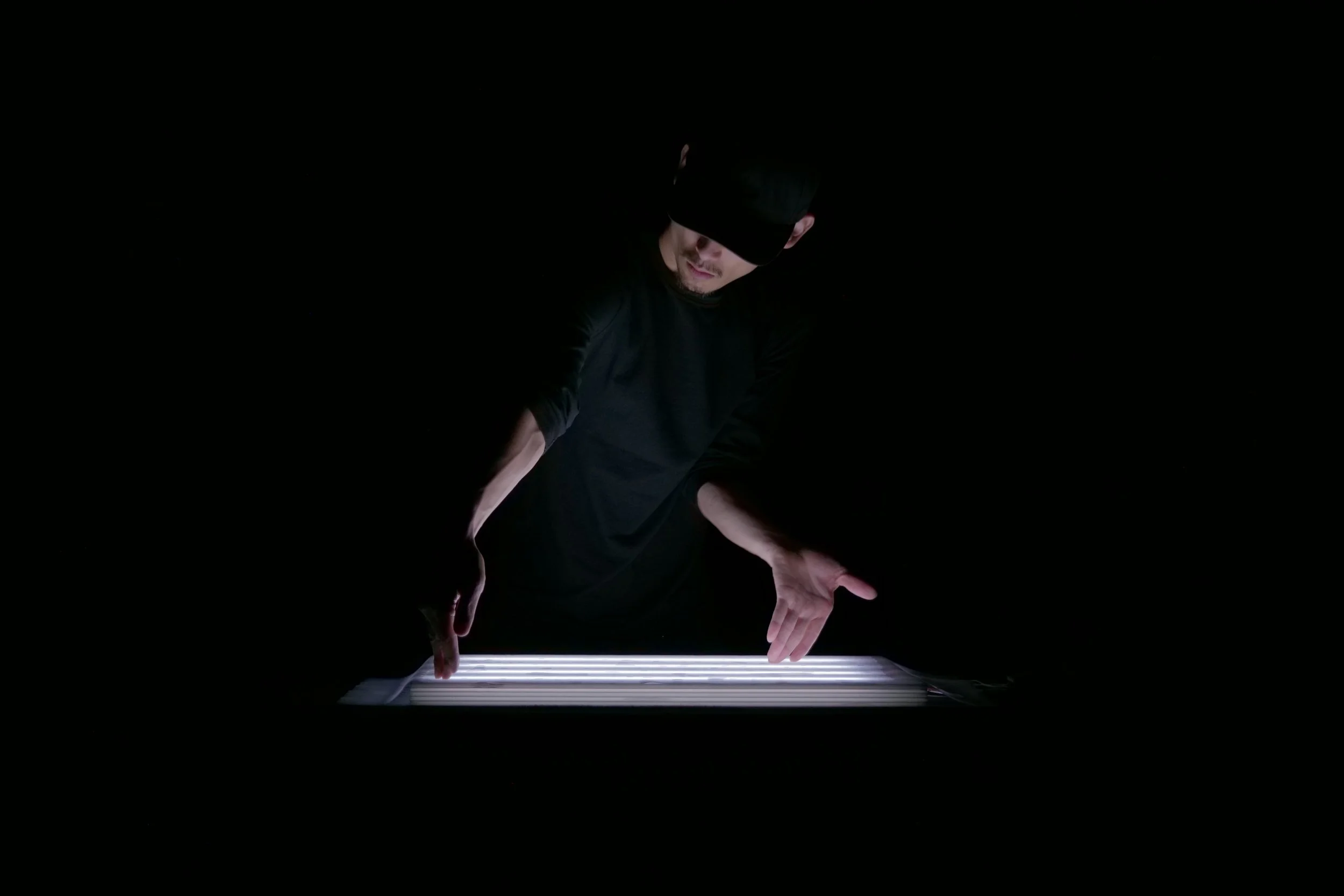Night Sea, Island, Wave(s)
In this work, the sound of the performer moving his body on different surfaces is captured by several microphones, constantly sent to a computer, and gradually transformed by a pre-built audio program which then emanates from the speakers.
Sometimes the performer moves by imagining the sounds that his movements will produce, and sometimes he moves in response to the sounds coming from the speakers. In both cases, the performer's movements are instantaneous.
The lighting system is partly linked to the audio program, which allows the sound to operate and trigger the light.
The work explores various ways to dance with and visualize the sound while instigating the viewer's acute perception of sound and broadening their relation to it.
performed at Toyooka Theater Festival and supported by UnterwegsTheater in 2023







